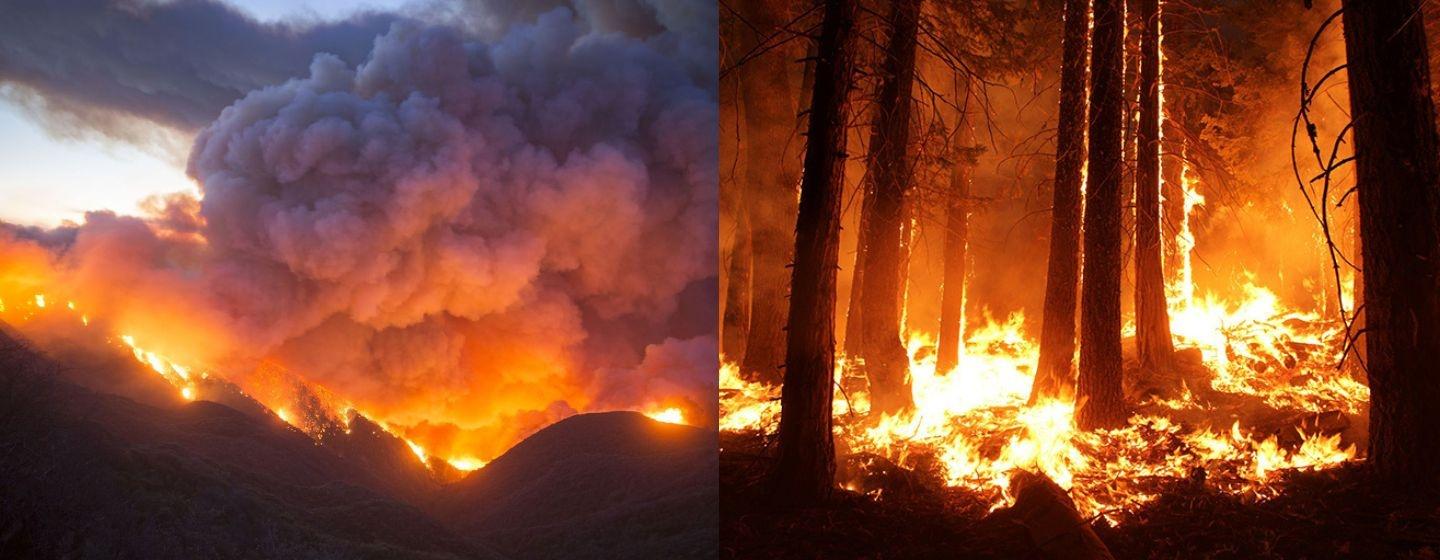Birds Prefer Areas Devastated by Wildfires


We’ve all seen frightening images of wildfires roaring through forests in the western United States and Maui, as well as Canada, Australia, Greece and China. And last summer here in North Carolina, a state of emergency was declared in Henderson County because of a wildfire that burned hundreds of acres and destroyed several buildings. Residents across the state also witnessed the hazy skies and smelled the smoke from wildfires in Canada. Air quality alerts were issued as winds carried the smoke for hundreds of miles.
And while those fires are incredibly destructive and sometimes deadly, a study from NC State shows severe fires can be beneficial for wildlife, especially birds.
“It’s important for us to understand the relationships between animals and wildfire dynamics as the climate changes because predictions show more of these high-severity wildfires across the landscape in the future,” said Chris Moorman, professor of forestry and environmental resources at NC State.
NC State’s study focused on a wildfire that severely burned sections of Nantahala National Forest in 2016. Fires covered 235 square miles (about half the area of San Antonio, Texas) in the western part of the state during an extremely dry autumn. Authorities blamed most of the fires on arson.
Researchers found that many species of birds preferred severely burned sections of the forest. How did they learn that? They looked at three burned areas of the forest and tracked various levels of burn severity. They then counted the abundance and diversity of birds during the breeding season in each of those areas over a five-year period.
It turned out the number and variety of birds in areas with the most damage were double what they found in unburned sections. The results were a bit surprising, especially after scientists saw how badly the areas were damaged.
“After the most severe wildfires, everything was brown and black and appeared to be dead,” said Moorman, recalling the devastated landscape. “But change happens quickly, the vegetation grew back, and we know that birds and other animals respond to forest vegetation structure, which is the distribution of plants vertically in a forest.”
In severely burned areas, scientists documented the loss of most of the canopy trees, followed by the regrowth of dense shrubs and the resprouting of trees. In those areas, 44% of the trees died in the first year. Five years after the fire, 71% of the trees had died. Compare that to only 7% of trees dying in unburned areas.
But researchers found that very few bird species avoided the severely burned areas. In fact, several species were more abundant or only observed in those sections. Indigo buntings, chestnut-sided warblers and eastern towhees were all found in the most-damaged areas. Those species all breed in shrubs where there are very few canopy trees.
Scientists say the findings from the study have implications for forest management.
“It’s almost impossible to manage for high-severity wildfires because it’s too dangerous, and there’s also the loss from timber revenue,” said Moorman. “But there are methods of timber harvest that can mimic the conditions created by high-severity wildfires. We’ve also found the low-severity burns, usually prescribed fires that are used to guard against large, uncontrolled fires, have insignificant impact on breeding bird species.”
The key, it seems, is damage to the tree canopy. If tree mortality is low and the canopy is spared, the study shows the bird community won’t change very much. If most of the trees are killed by the fire, and the canopy is dramatically changed, the bird community will significantly change as well.
Prescribed burns at NC’s Pilot Mountain helped it bounce back after a recent wildfire.